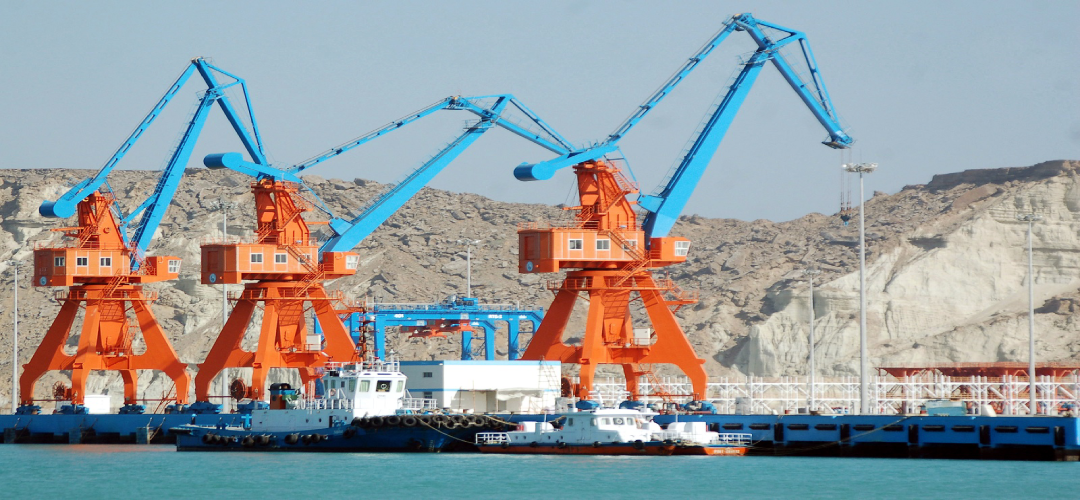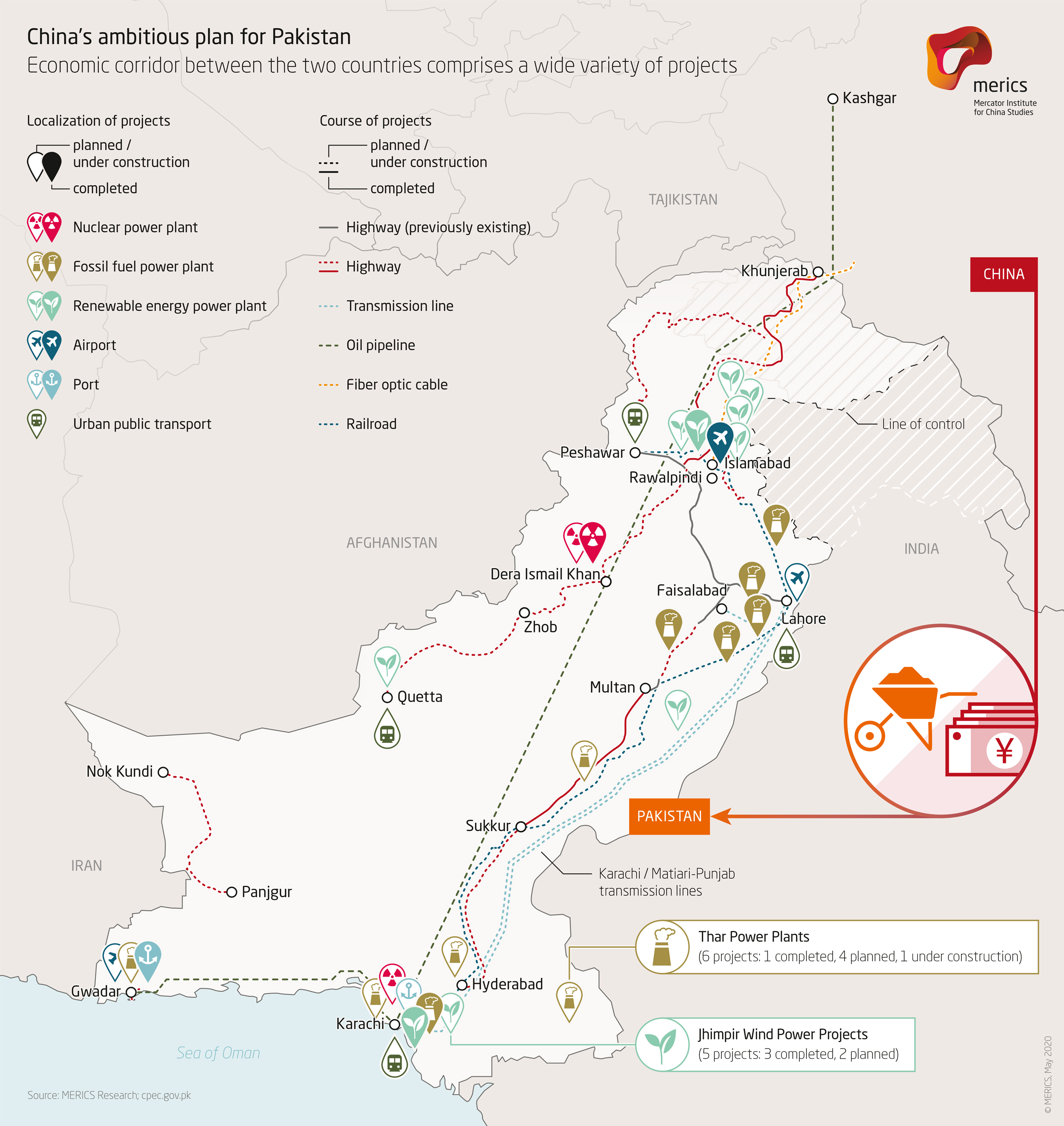CPEC: Looking Ahead
August 19, 2023 | Expert Insights

In a much-hyped visit, China’s Vice Premier He Lifeng visited Islamabad to celebrate the 10th anniversary of CPEC, an occasion which was marred by bloody militant attacks in many areas of Baluchistan that are considered critical to the CPEC.
Security risks are one of the many issues that plague the CPEC and make for an uncertain future for this infrastructure initiative in Pakistan as well as other Belt and Road projects not only in Pakistan but in other countries.
China's Belt and Road Initiative (BRI) has brought many benefits to Pakistan's economy but has also contributed to its debt crisis. It helped tackle Pakistan's serious power shortage, reduce blackouts, create employment, and promote economic growth. However, looking forward, the BRI faces many obstacles to its progress in Pakistan, such as extremist attacks, local resistance, politically motivated interventions, and China's economic problems.
Background
The CPEC is China's flagship project and its most ambitious initiative in any country. It was launched in 2015 by President Xi Jinping under the aegis of his Belt and Road Initiative (BRI), which aims to facilitate exchange and cooperation between China, Eurasia, and Africa through a network of infrastructure projects.
China hoped to build on its close relationship with Pakistan and develop transport and power infrastructure in the country, which would benefit Chinese businesses and bolster Pakistan's struggling economy and provide a model for the BRI in other countries. Additionally, a stronger and more economically stable Pakistan would make for a robust security partner in South Asia and a better counterbalance to regional rival India.
The Chinese government wanted to create a direct trade route between China's western province Xinjiang and the Arabian Sea (through southwest Pakistan), which would serve as an alternative trade route to the maritime route through the Malacca Strait in Southeast Asia.
Further, one of China’s primary motivations was its anxiety about extremism and supporters of Uighur militants in Pakistan, which affects Xinjiang (although China’s brutal policies contribute to Islamic extremism in Xinjiang). China hopes that investment in infrastructure will create economic stability and growth as well as social stability and security and help prevent Pakistan from serving as a hotbed of extremism, which poses a security threat to China.
Another factor that made Pakistan suitable for China's flagship initiative was the close security and political ties it shared with China. This meant that Pakistan was comfortable with the BRI's strategic aspects, such as commercial and military ports and providing Chinese firms extensive access to its economy.
China's commercial interests also played a role in the CPEC. Chinese companies faced overcapacity in China, contrasting Pakistan's growing need to address energy shortages and a convenient closed bidding process. Most of the construction work under CPEC has been contracted to Chinese companies who have brought in their own engineers and skilled workers, leaving very little scope for employment for locals in the Pakistani territory it passes through.
For Pakistan, the CPEC was an opportunity to benefit from Chinese capital, production capacity, and expertise to develop its infrastructure and facilitate economic growth.
The CPEC value grew to an estimated $62 billion in pledges. The port of Gwadar on the Arabian Sea has emerged as the key project of the CPEC. The majority of CPEC funds have gone into power projects. Other important projects include upgrading a railway, hydroelectric power plants in the disputed Kashmir region, a metro system in Lahore, Special Economic Zones (SEZs), and Huawei optic fibre cables between China and Pakistan.

Analysis
The insurgent attacks around the 10th anniversary of the CPEC reflect the growing menace of terrorist attacks related to the infrastructure initiative, targeting Chinese projects and nationals. Various militant outfits threaten the CPEC's security, particularly in Western Pakistan. These include Baluchistan separatists such as the Balochistan Liberation Army (BLA) as well as the Pakistani Taliban movement (TPP), which has revived its insurgency since U.S. troops withdrew from Afghanistan in 2021 and gained support and a haven across the border in Afghanistan.
Further, there is also a spillover of fighting between Afghanistan's Taliban regime and the rival ISIS-K (Islamic State Khorasan) in northwestern Pakistan. Additionally, ISIS-K has emerged as a major anti-China jihadist group, posing a security threat to the CPEC. In recent months, there has been a rise in terror attacks targeting Chinese projects and nationals in Balochistan and Karachi working on CPEC projects. In light of the deteriorating regional security post, the withdrawal of U.S. troops from Afghanistan combined with increasing local resentment towards the CPEC in Balochistan, militancy, and local resistance will likely hinder the initiative's progress.
Not all resistance to the CPEC is militant and violent. Locals in Balochistan, particularly in Gwadar, protest the project because of its ramifications in the area. Converting the ancient fishing settlement of Gwadar into a high-tech port and a free trade zone has resulted in water shortages, deprived local fishermen of their livelihoods, and brought inhabitants face-to-face with land-grabbing attempts by real estate tycoons. Protests have ranged from peaceful to demonstrations blocking roads, burning tires, and shutting down the city.
The most critical hurdle the CPEC faces going forward is the combination of Pakistan's debt crisis and China's domestic economic problems. Following a balance of payments crisis, Pakistan was recently on the verge of defaulting on its external debt. While Beijing has extended rescue loans to safeguard its investments, this only buys time and will add to Pakistan's mounting debt to China. The IMF has also recently extended loans to Pakistan. However, IMF support has been reluctant, with the IMF asking Pakistan to renegotiate its CPEC deals as one of the conditions for granting it a loan last year.
Issues with a lack of transparency in the CPEC initiative and Pakistan's unsustainable debt to China could affect the IMF's willingness to extend further loans to Pakistan. Pakistan must also ensure that it maintains ties with the West, the U.S., and the IMF since its economy relies on financial support from the IMF and other donor organisations. While China is keen for Pakistan to secure IMF loan support to safeguard its investments and deliver timely returns, the IMF is more cautious towards Pakistan’s loans from China.
China's domestic economic problems, such as slowing growth, falling exports, and risky borrowers, have diminished its financial capacity to support CPEC projects with loans or offer concessional interest rates. Additionally, China is increasingly scaling back large infrastructure projects because of the local politics and bureaucracy involved, which delay returns on investment. Growing domestic economic pressure has made China more reluctant to lend to risky countries grappling with debt. BRI engagement in Pakistan fell by 56% during the first half of 2022. Additionally, China is increasingly turning its gaze to oil and gas investment, which comprised around 80% of Chinese overseas investments in the first half of 2022. Resource-based projects allow a more direct way for China to be repaid than large infrastructure projects.
The political situation in Pakistan presents changing governments which approach the BRI with politically motivated decisions. For instance, SEZs are often determined contrary to feasibility studies based on electoral constituencies. Local bureaucracy is another issue, such as the Balochistan provincial government, which delayed approving the Gwadar power project by three years.
Growing pressure from China over delays in the completion of CPEC projects led erstwhile Prime Minister Imran Khan’s PTI government to pass the CPEC Authority Ordinance, which brought the CPEC under military control. The CPEC Authority, a military body, was given sweeping powers and reported directly to the Prime Minister instead of the Planning and Development Ministry. China welcomes military control over the CPEC because it is concerned about security and the completion of projects. However, the military’s tightening control over civilian and economic aspects of the CPEC has given it an increasingly powerful role and further weakened the civilian government.
Assessment
- Due to domestic economic pressure, China is increasingly reluctant to provide loans for CPEC and BRI projects in Pakistan and less likely to grant concessional loans. On the other hand, Pakistan will need further loan support and concessional rates considering its debt crisis. This situation is likely to impact the progression of CPEC projects.
- The military control over CPEC projects has further strengthened its role in Pakistan and weakened its civilian democracy. Despite this, Extremist threats from a range of militant outfits pose a serious obstacle to the future of BRI in Pakistan, as does simmering discontent and resistance from locals affected by it, such as in Gwadar.
- As the flagship project of the BRI, CPEC has gained political significance, and Pakistan is considered the "buckle" in the belt of BRI. Its success reflects on the broader BRI and shows that cooperating with China brings substantial benefits. For this reason, the challenges that the CPEC is facing in its progress in Pakistan affect the BRI's presence in distant regions like Africa and Europe. If the CPEC plunges Pakistan into further debt and fails to achieve the economic gains it promised, it will affect other countries' response to the BRI, particularly in regions that are increasingly cautious towards it today, such as Europe.








Comments